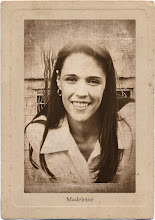Many seasoned article writers are of the opinion, because they have published a poem, a novel, wrote for the local press etc, qualifies them to be a good article writer for the web. Sorry people, that is not true.
Writing for the web is something completely different from printed media. With printed media you write for someone who will start at one point and are likely to read all that is offered. With web article writing, your article will not be placed in front of the reader and he looks through it and sees if he wants to read it. He must search for it before he can read it!
The way you have to structure your web articles is not a complicated formula you need to apply. You can use your own creativity and test various ways and find one that you are comfortable with and most importantly, a way that is acceptable to your clients.
Most of the times, your client inform you about the specific structure requirements he have for his articles. You may not agree with this, but do remember, first of all, the client knows why he wants it that way and secondly, while your client does the paying, he can have it the way he want.
The Best Structure for a Web Article
A properly structured web article will always have 3 basic elements. Note: Not can have; will always have:
- A proper introduction
- Text body that provide the reader with information on the topic
- Summary of the content or a closing paragraph.
The Introduction
The introduction paragraph needs to put readers in the picture on what they will be reading in the article. It needs to be strong and grasp the interest of your reader instantaneously. Apart from making it attention grabbing, this is one of the most important places to use keywords. It is advisable to use keywords as close to the start of the first sentence of the introduction as possible. This is done so that search engines pick up the article easily during a search. After all, this is the main objective of SEO.
The Body Text
As an article writer that conducts many searches on the internet, you ought to know how frustrating it is to read half of the site before you find the information you are looking for.
When you start with the body text, put the facts on the table right away. Give the reader immediately what he is looking for. Web readers are impatient. If they do not find the information they are looking for in the first couple of paragraphs, they are likely to move on the next article that most likely will.
To ensure you client receive optimum use from your work, make sure to include the keywords through out the body text in a natural way without compromising the reading ease or flow of the article. However be careful not to start each sentence with the keywords or flood the article with keywords. The secret is to use the keywords without the reader noticing them worked into the article.
Summary or Closing Paragraph
Commonly the closing paragraph serves as a final summary of the content you provided the reader with. In addition, your closing paragraph must create the urge with the reader to take action of some kind or the type of action the client would require from the purpose of the article. Using the keywords in the summary paragraph is very important for SEO purposes.
With these three elements in your article, you can be sure to end up with a professionally constructed article and moreover one that is effective in the purpose it needs to serve. Always try to make the article as simple and uncomplicated to read.





No comments:
Post a Comment